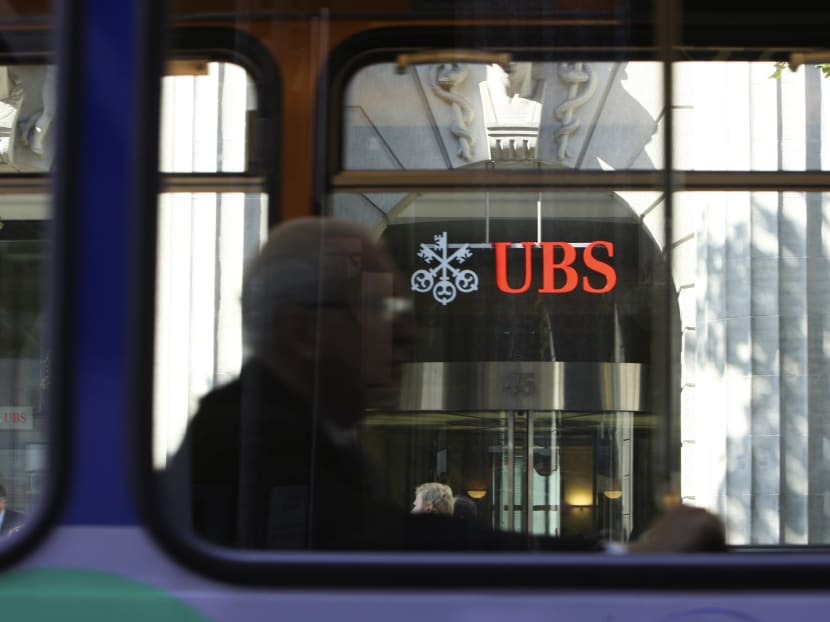MAS probe: 20 banks tried to rig interest rates
SINGAPORE — Bank traders, including those at the three local lenders and at international banking giants such as ING, Royal Bank of Scotland and UBS, have tried to rig benchmark interest rates, the Monetary Authority of Singapore (MAS) said yesterday, following a year-long review that also revealed deficiencies in the way 20 banks operated in the rate-setting process.

Photo: Bloomberg
SINGAPORE — Bank traders, including those at the three local lenders and at international banking giants such as ING, Royal Bank of Scotland and UBS, have tried to rig benchmark interest rates, the Monetary Authority of Singapore (MAS) said yesterday, following a year-long review that also revealed deficiencies in the way 20 banks operated in the rate-setting process.
A total of 133 traders were found to have made several attempts each to manipulate rates, including the Singapore Interbank Offered Rate (SIBOR) that is used to benchmark many home loans, but there was no conclusive finding that those attempts succeeded, the MAS said.
As part of the investigation, some cases were referred to the Commercial Affairs Department and the Attorney-General’s Chambers, but based on the available evidence no criminal offences under current laws appear to have been committed, it added.
Meanwhile, three quarters of the traders involved, who represent a small proportion of Singapore’s over 4,000-strong financial trading community, are said to have resigned or been fired, with the rest set to face internal disciplinary action.
But their activities have led to no actual financial losses among customers, said the Association of Banks in Singapore (ABS), which conducted a series of tests on historical data.
“As far as we can tell, customers would not have experienced any impact on their retail loans (including mortgages) and corporate loans,” it said.
Interbank rates are commonly used by banks to price loans to customers, and suspected manipulation has led to global crackdowns in recent years. The MAS began its investigation into SIBOR and other rates last July, reviewing over 100 million documents to assess potential irregularities between 2007 and 2011.
In addition to the individual attempts to manipulate rates, the findings also revealed deficiencies at 20 banks — including all three local banks — in the governance and control of their benchmark-setting processes. As a result, they will be required to set aside additional reserves with the MAS at zero interest for a year until the deficiencies are addressed.
The amount that has to be placed with MAS will vary according to the severity of attempts by each bank’s traders to influence rates. ING, RBS and UBS will have to set aside between S$1 billion and S$1.2 billion each, OCBC will have to cough up S$700 million to S$800 million, while the amounts for DBS and UOB are S$400 million to S$600 million each. This will result in financial losses for the banks involved.
OCBC Chief Executive Samuel Tsien acknowledged deficiencies at his bank. “These incidences were not systemic or widespread but we took them seriously. We have taken tough actions to instil greater discipline in this area … We will comply with the requirements set out by the MAS.”
DBS said it had taken steps to enhance controls around the benchmark submission process and would further review areas of possible improvement. UOB said it would implement measures prescribed by the MAS and strengthen policies and procedures.
The MAS requirements also include quarterly reports on the progress being made to strengthen the rate-setting processes. Banks must also conduct independent reviews to ensure the effectiveness of their remedial measures.
To strengthen the benchmark setting processes, a new regulatory framework was proposed by the MAS yesterday for public consultation. Under the new framework, benchmark manipulation will be subject to criminal and civil sanctions under the Securities and Futures Act. The MAS will also designate major financial benchmarks, including SIBOR, for further regulatory oversight. The framework is targeted to be implemented in the fourth quarter this year.
Separately, the ABS and the Singapore Foreign Exchange Markets Committee are putting in place measures designed to reduce the chances of any further attempted rate manipulation. Some benchmark rates will be discontinued, while others will be calculated according to market trading activity rather than information supplied by banks.
But the SIBOR will continue to be set by bank submissions, which could potentially leave it open to further manipulation attempts. However, a comprehensive range of additional safeguards is being put in place to keep the risk as low as possible.
MAS Deputy Managing Director Teo Swee Lian said: “The proposed new regulatory framework will minimize the risk of attempts to inappropriately influence … benchmarks.”





